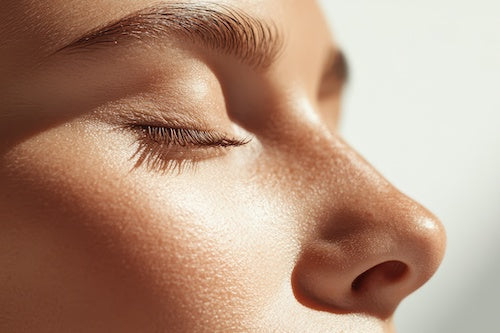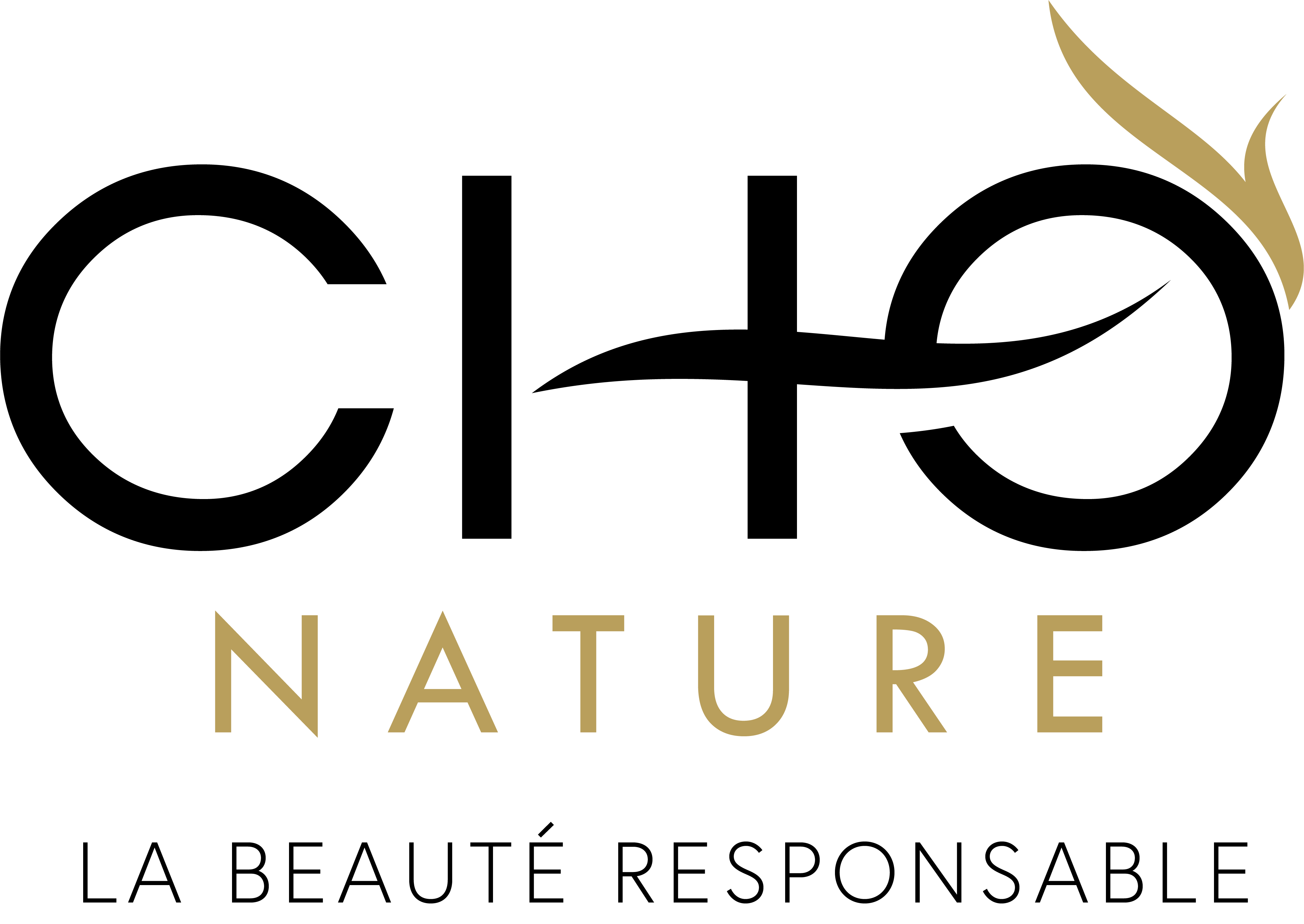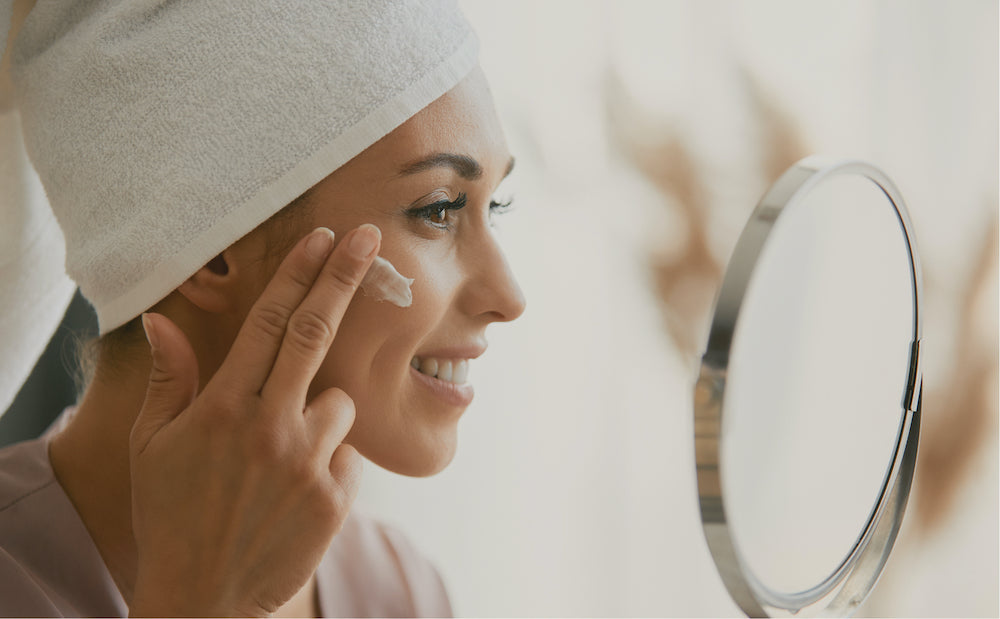
What are the effects of the sun on the skin?
At CHO Nature, we love summer, the warmth of the sun on the skin, and the natural glow of a golden complexion. ☀️
But if the sun does us good, it can also leave lasting marks on the skin.
Behind tanning, UV rays accelerate skin aging: wrinkles, spots, loss of firmness, etc.
At 20, we tan without even thinking about it. At 30, the first fine lines appear. At 40, pigment spots appear. This phenomenon has a name: photoaging.
In this article, we explain the effects of the sun on the skin, to help you understand better... and protect yourself better.
I. What are the signs of sun-related skin aging?
Sun-related skin aging, also called photoaging , is clearly distinct from natural skin aging. While chronological aging is an inevitable phenomenon linked to the passage of time, photoaging is directly caused by prolonged and repeated exposure to UV rays .
Its signs? They appear earlier and are often more pronounced than those of natural aging: spots, deep wrinkles, loss of elasticity, etc.
HAS. PIGMENT SPOTS

Sun spots , also called solar lentigines , are one of the most visible signs of photoaging . They appear mainly on the most exposed areas: the face, neck, hands and arms.
📍 Why do they appear? These pigment spots are caused by an overproduction of melanin , the pigment responsible for skin color, in reaction to repeated attacks from UV rays.
Unlike age spots , which appear gradually with age, sun spots can appear from a very young age , especially in cases of frequent unprotected exposure.
As we age, the skin can also develop other pigment irregularities:
• Brown spots (hyperpigmentation), more or less dark, caused by an imbalance of melanocytes , the cells responsible for pigmentation.
• But also, conversely, white spots (hypopigmentation), due to a loss of function of these same cells.
These spots are benign , but they reveal a skin imbalance often linked to the sun.
B. THICKENING OF THE SKIN
When faced with repeated exposure to the sun, the skin defends itself. One of its first reactions? It thickens. This phenomenon, called hyperkeratosis , corresponds to a strengthening of the upper layers of the epidermis, which acts as a barrier against UV rays.
🔎 While this mechanism may seem protective, it has an unflattering effect on the skin: it becomes rougher, less supple , and loses its radiance.
But that's not all.
Excessive sun exposure also causes a process called solar (or actinic) elastosis : a buildup of damaged elastin fibers in the dermis. The result? Skin that becomes thick, uneven, and sometimes yellowish , far from the smooth, firm appearance of healthy skin.
💡 Unlike natural aging, which makes the skin thinner and more fragile, photoaging gives a denser but disorganized texture .
C. DEEP WRINKLES
Marked wrinkles are not just a matter of age: they are also one of the most striking consequences of excessive sun exposure .
The cause? Solar elastosis , which thickens the skin in a disorganized way. This change in texture makes furrows deeper , accentuating the appearance of wrinkles and fine lines. The result: a face that appears to age faster and more intensely .
Added to this is a loss of elasticity, firmness and hydration , making the skin drier, duller... and therefore more vulnerable to the signs of aging.
☀️ Essential reminder: UV rays accelerate all the mechanisms of skin aging .
II. The causes of photoaging

HAS. UVA
We see them less, we feel them less... and yet, UVA rays are the main culprits of premature aging of the skin .
Present all year round , they pass through clouds, windows , and penetrate to the dermis , the deep layer of the skin. About 20% of them reach this area , causing invisible but lasting damage .
🔬 What they cause:
• Alteration of collagen and elastin fibers , essential for skin firmness
• Skin thickening , promoting the appearance of deep wrinkles
• Oxidative stress , which accelerates cellular aging
Even without sunburn, UVA rays leave a silent mark , day after day. And unlike UVB rays, they work without heat or redness , which makes them even more treacherous .
B. UVB
Often associated with tanning, UVB rays are far from harmless .
Active mainly in summer, they penetrate to the epidermis , the most superficial layer of the skin. They are responsible for sunburn : redness, sensation of heat, and sometimes desquamation (peeling skin).
💡 Their double face:
• ✅ They participate in the synthesis of vitamin D
• ⚠️ But they cause burns , accelerate skin aging , and can promote the development of long-term lesions
Although they do not penetrate as deeply as UVA rays, their intensity in summer makes them particularly aggressive for the skin.
C. CONSEQUENCES OF UV RAYS
• DNA damage : UV rays can damage the DNA of cells, especially fibroblasts (those that produce collagen). This damage can become permanent .
• Disrupted cell division : the skin loses its natural repair capacity.
• Toxic proteins : certain damaged proteins are no longer eliminated correctly, disrupting cellular metabolism.
• Premature aging : elastin and collagen fibers degrade, the skin sags , loses firmness and wrinkles appear .
• Disorganization of melanocytes : this promotes the appearance of pigment spots .
III. Prevent photoaging
HAS. USE SUNSCREENS

We often think about sunscreen at the beach, but in reality, UV rays are present all day long in spring and summer, even on overcast days and through windows !
💡 Good reflexes:
✅ Use a broad-spectrum sunscreen (UVA + UVB) every day ✅ Apply it generously to all exposed areas, even in winter ✅ Reapply every 2 hours , especially after swimming or when sweating ✅ Complete with a hat , sunglasses and cotton clothing suitable for your phototype
🎯 Tip: Incorporating sunscreen into your daily routine is one of the most effective ways you can prevent the signs of aging and keep your skin bright, even, and healthy.
B. WEAR PROTECTIVE CLOTHING
Sunscreen is essential... but it's not enough ! For optimal protection, also opt for anti-UV clothing and accessories. Choose lightweight but covering clothing , ideally made from anti-UV fabrics , to limit the impact of the rays on your skin.
👒 A wide-brimmed hat will effectively protect your face and neck, which are highly exposed areas. 🕶️ And don't forget sunglasses with UV protection , which are essential for protecting your eyes and the thin skin around your eyes — often prone to wrinkles and spots !
✨ Tip: By combining sunscreen + protective textile + accessories, you build a complete defense against premature aging caused by the sun.
C. AVOID SUN EXPOSURE
We can't stress this enough: the best way to protect your skin is to avoid direct sun exposure as much as possible , especially between 10 a.m. and 4 p.m. This is when UV rays are most intense... and therefore most dangerous for your skin.
Even under cloudy skies, UVA rays pass through and continue to attack the epidermis.
If you can't stay in the shade: -Cover up with long clothing, a wide-brimmed hat, and sunglasses. -Apply broad-spectrum sunscreen every two hours. -Beware of high-risk environments: Altitude, snow, or sand strongly reflect the rays.
D. HYDRATE AND NOURISH YOUR SKIN AFTER EXPOSURE
After every exposure, even light, your skin needs comfort . The sun dries it out, weakens it and generates free radicals responsible for skin aging.
💡 The right reflex? Hydrate and nourish intensely to help it regenerate. Choose treatments rich in antioxidants to neutralize the effects of UV rays, and soothing textures that repair the skin barrier. Hyaluronic acid -based serums are ideal for restoring hydration , reducing sunspots , preventing dehydration and limiting the appearance of wrinkles .
IV. Our product recommendations
• Floral Care Mist : a refreshing and hydrating mist, enriched with hyaluronic acid , to be sprayed without moderation to soothe instantly.
• Hydratense Serum : concentrated in hyaluronic acid, it plumps the skin, making it more supple and smoother.
• After-Sun Beauty Oil : soothing and nourishing, it calms redness thanks to its anti-inflammatory oils, while enhancing your tan. Its natural scent of lavender, geranium and lemongrass is a real invitation to well-being.
• Nourishing and Soothing Cream : rich in organic active ingredients, it nourishes deeply and helps the skin fight against the signs of aging, while calming the overheating caused by the sun.


